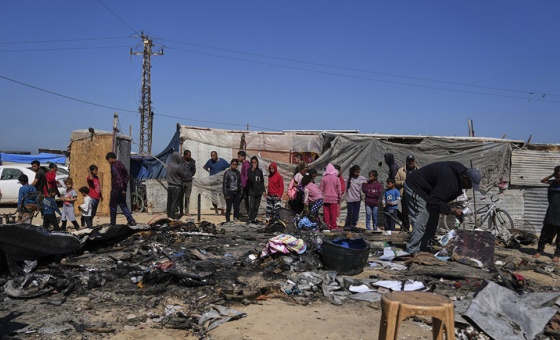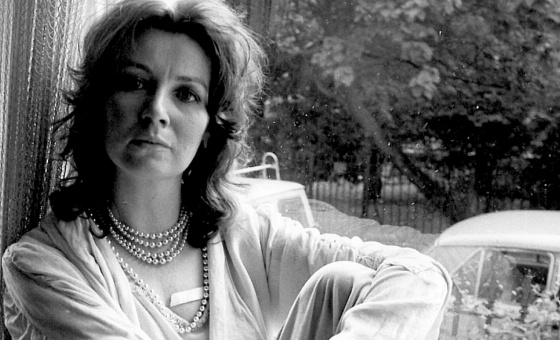This is the last article you can read this month
You can read more article this month
You can read more articles this month
Sorry your limit is up for this month
Reset on:
Please help support the Morning Star by subscribing here
THIS year marks both the 70th anniversary of the end of WWII and the liberation, on January 27 1945, of the nazi extermination camp Auschwitz. That date is now observed each year as Holocaust Memorial Day.
As part of the past and ongoing cold war against Russia there has been a steady denigration by Western politicians and military historians of the role the Soviet Union played in ending the war and liberating Auschwitz.
In order to refute this it is necessary to go back to the beginning of January 1945, when the victorious Red Army was targeting Berlin alongside liberation armies from Poland, Czechoslovakia, Bulgaria and Romania.
On January 6 1945 Winston Churchill wrote to Stalin: “The battle in the west is very heavy and at any time large decisions may be called for from the supreme command.
“You know yourself from your own experience how very anxious the position is when a broad front has to be defended after temporary loss of initiative (referring to the Ardennes offensive) … I shall be very grateful if you can tell me whether we can count on a major offensive on the Vistula front, or elsewhere, during January... I regard the matter as urgent.”
The next day Stalin replied: “We are mounting an offensive, but at the moment the weather is unfavourable. Still, in view of our Allies’ position on the western front, GHQ of the supreme command has decided to complete preparations at a rapid rate, and regardless of weather, to launch large-scale offensive operations along the entire central front not later than the second half of January.”
Five days later, at daybreak on January 12 1945, the Vistula-Oder operation, drawn up in Moscow at the end of November 1944, commenced.
Marshal Konev was commander of the 1st Ukrainian Front. The aim was to capture the Silesian industrial area, second only to the Ruhr in its capacity, near the ancient Polish city of Krakow.
In his book Year of Victory, Marshal Konev describes in detail the battle plan by which the Soviet forces drove the nazis back so rapidly that they reached Krakow on January 17.
Here the Soviet 60th army, attacking from the east and south-east of Krakow, met increasingly furious resistance from the Germans.
South-west of Krakow is the Polish town of Oswiecim — called Auschwitz by the Germans.
Auschwitz was the largest nazi installation of mass murder in occupied Europe, a series of massive gas chambers and crematoria where the majority of Jews deported to the camp were exterminated on arrival — alongside around 20,000 Roma.
The SS put up a determined resistance to the Soviets. But after fierce fighting the soldiers of Jewish Colonel Anatoly Shapiro’s 1085th regiment broke into Auschwitz I at 2pm on January 27.
In his book Total War, military historian Michael Jones quotes Shapiro: “I had seen many innocent people killed. I had seen hanged people. I had seen burned people. But I was still unprepared for Auschwitz ... As we entered we saw rows of barracks, one after the other. I opened the door to one. The stench was overpowering. It was a women’s barracks and there were frozen pools of blood and dead bodies lay on the floor. In between lay those still alive, semi-naked, only wearing thin undergarments — in January! My soldiers recoiled in horror. One said: ‘I can’t stand this any longer. Let’s get out of here! This is unbelievable’.”
But Shapiro had orders to inspect the whole camp.
Lieutenant Ivan Martynushkin, entering another building, remembered: “Emaciated, brutally tortured people wrapped in rags, clutching each other. Most were unable to stand on their feet and lay on plank beds or sat propped up against a wall. It was a terrible picture — an absolute vision of hell.”
They were unable to communicate with them until Colonel Georgi Elisavetsky, another Jewish officer, spoke to them in Yiddish.
They thought he was a nazi provoking them until he showed them his tunic and Red Army medals and told them they had come to liberate them.
Shapiro recalled: “We discovered mountains of artificial teeth, spectacles and human hair, piles of prisoners’ shoes and suitcases. But we had not yet seen the children’s barracks. Inside it were only two children left. We learned that all the others had been gassed, or were ‘in hospital,’ where medical experiments were performed on them.
“When we entered they cried out in terror, ‘We are not Jews!’ They were in fact Jewish children and mistaking us for German soldiers evidently thought we were going to take them to the gas chambers … We had seen so many terrible things as we marched across our Motherland, repelling the fascist invaders. But this was the harshest sight of all.”
Others entering Auschwitz-Birkenau came across equally horrifying sights. Elim Alimbekov entered a dark, dilapidated hut and thought it was a store room containing bundles of clothing. Then he saw that the bundles were the bodies of little children. Some were dead, others half-alive without flesh on them — just bone.
The Red Army brought in field kitchens, doctors, nurses, officers and soldiers and a mobile hospital unit run by Dr Maria Zhilinskaya, which managed to save 2,819 inmates.
The awful experience of what they saw at Auschwitz imbued its liberators with a terrible desire for vengeance on the nazis. In the words of one soldier, “We vowed to finish the war as quickly as possible and send them all to hell.”
Jean Turner is a trustee of the Soviet Memorial Trust Fund.
A Holocaust Memorial Day remembrance event organised by Southwark Council and the Soviet Memorial Trust Fund will start today at 10.30am at the Imperial War Museum, Lambeth Road, London.





